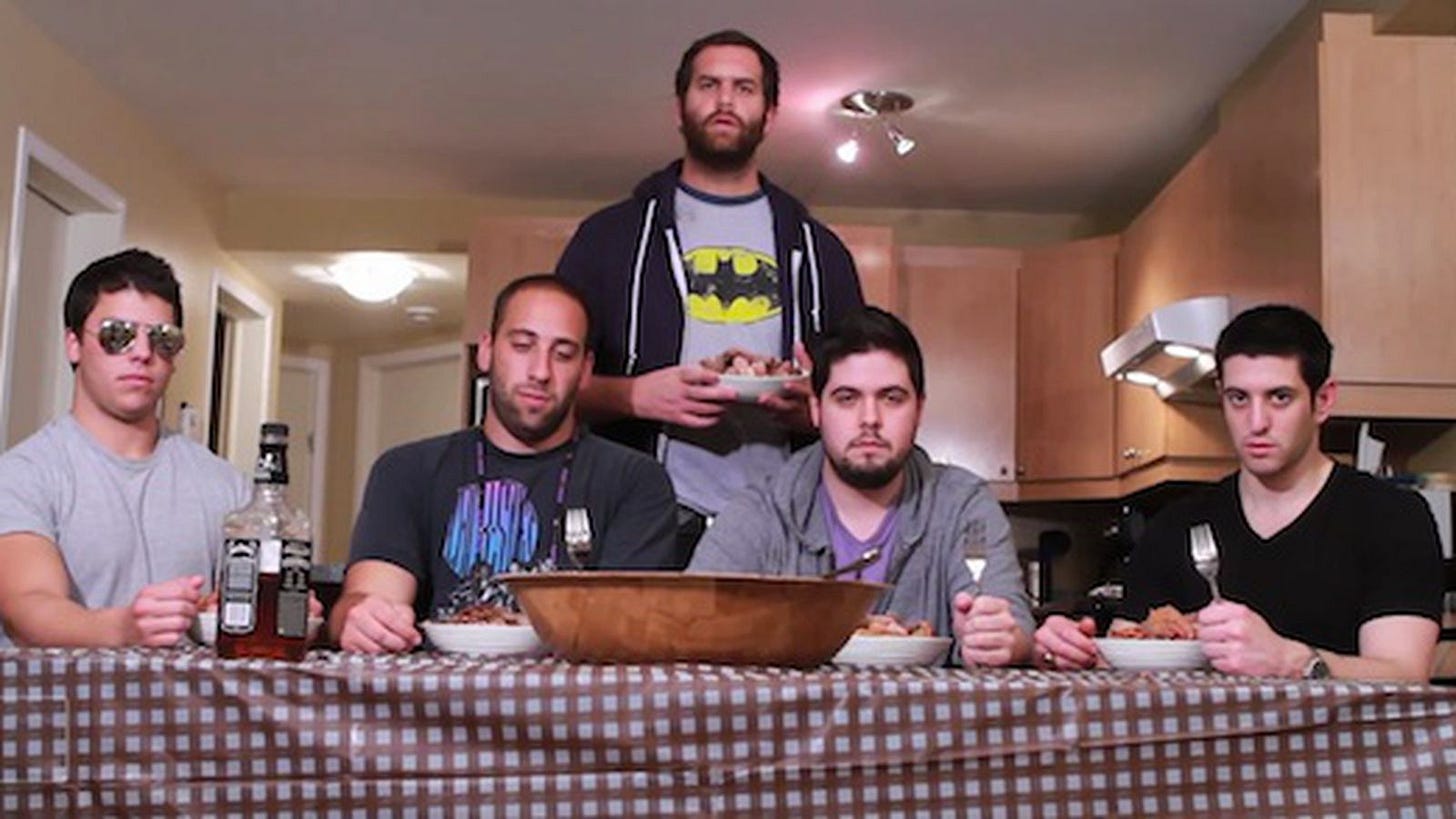If TikTok’s U.S. operations are not sold by January 19th, the app will shut down. Earlier this year I wrote about food influencers, whose proliferation in culture was facilitated by the Chinese app. More so than any other platform, TikTok capitalized on our primal urge to consume food, showing it more quickly and more disgustingly than ever before. Both Meta and Google have created their own versions of TikTok—Reels and Shorts—in attempts to reinvigorate the former hosts of a bygone era of food content. That is not to say there was not a time and a place where Instagram and YouTube shaped the way we think about how we think about what, where, and why we want to consume food; though it might be lost on Zoomers, “Epic Meal Time” used to mean something. Likewise, square-cropped, heavily filtered iPhone photos changed the way we look at food forever. It’s because of Instagram that phone always eats first.

The most popular TikTokers might repost their content to other platforms, but their brand deals, free meals, and microcelebrity all come courtesy of their home app. If and when TikTok is banned, where do these people go? Likely to other platforms, where they will once again have to build a following while delivering new content. You cannot re-post old “hits” and expect them to garner the same attention: the burger you ate in 2023 was already out of fashion the following week, thanks to TikTok’s algorithm and the way it affects our taste. But Instagram and YouTube have bred their own particular algorithms, deemed “dumpster fires” by “creatives” looking for TikTok-esque success. They are more random, not amplifying the next PinkPantheress or Thomas Straker, but people like Will Mahony, who succeed despite an insistence on their niche.
Mahony’s content is freewheeling but narrative, modern in content but classical in form. He preaches from his Reels pulpit like an ironic self-love guru who cannot help but buy into his own shtick. His videos are funny, constantly toeing the line between rehearsed silliness and accidental profundity. At its best, Mahony’s content vaguely resembles TikTok’s Gen Z trend of “yapping,” which can concisely be described as a creator engaging with their audience via a one-sided FaceTime call. Whether starved for real friendship, or simply basic daily human interaction, watching a social media pseudo-comedian like Irene Lee can feel somewhat comforting. I do not find solace in videos like this, but I do find laughs, especially when Mahony combines the mannerisms of the manosphere with the vibes of Silver Lake. And, importantly, although edited, their content is not necessarily short: tastes are changing.

But no matter your flavor, both Lee and Mahony channel the zeitgeist in ways that place them at the bleeding edge of video creation. The latter already vocally prefers Instagram to TikTok, and has spawned imitators who also try to freestyle Reel their way to thousands of followers and glorified DJ sets. The most popular copycat—Strappnasti (a.k.a. gavinweiland)—burned bright and crashed out, focusing more on rabid account growth than good-natured videos. Great posting breeds great posting, but nothing ever beats the real thing; tweets that sound like Dril are never as good as tweets written by Dril.
In a potential post-TikTok world of food content, what was popular in the past will inevitably inspire what will succeed in the future. Last year, I defined Trumpian food content and analyzed its long tail: would Biden-core (the Costco Guys) stick around, would it bleed into a sloppier version of itself via Kamala-core, or would Trump, somehow, return? I did not muse much on that last point, because at the time I didn’t foresee a Trump election victory, nor do I care much for the type of food videos his first presidency inspired. Instead, I was hoping for a culinary cultural revolution of sorts; back-to-basics food content inspired by the past but ready for the brave, new, hungry world. And with a looming TikTok ban, this just might happen.
My girlfriend has me convinced that even if TikTok does not fully disappear, its largest content creators will migrate not to other short form platforms, but instead return to long-form video creation. Vlogs and vlog-esque content is poised for a comeback, but not in a Dobrikian sense. We are talking about the return of 30-minute, day-in-the-life videos á la 2014. I agree that we are at a precipice of our attention turning once again horizontal. While Trump 1 was defined by freneticism, Trump 2 will be a period of stepping back, “elder statesman” MAGAism. (He achieved a ceasefire in Gaza without doing or saying anything, apparently.) This lethargic spirit has already permeated the most popular right-wing content: Adin Ross streams for hours a day, and Joe Rogan seems to permanently live in his podcast studio.
The barrier to entry has been lowered, too. It used to be expensive to film and edit, live or not: the camera, the computer, the monitors, the software, the headphones, the internet connection, the poorly decorated not-bedroom-bedroom. Now, you can buy a hand-held, wifi-enabled 4K camera for a few hundred bucks. Just as anyone with a phone could go viral on TikTok, now anyone with access to an Amazon account can create their own, new Epic Meal Time (or, their own Joe Rogan Experience).
Imagine: what if the boys from the “Is Fortnite Actually Overrated?” meme had rich parents and unlimited resources? The MDFoodieBoyz have taken the Instagram foodfluencer world by storm, claiming to be the “#1 Maryland Food Podcast.” Though the FoodieBoyz also post on TikTok, they have more followers and much more engagement on Reels, some posts already in the millions of views. Their content consists mainly of clips of them podcasting from a very professional studio—the full first episode is uploaded to YouTube—asking each other questions like: “How old do you guys think is too old for trick-or-treating?” Episode one is just under 22 minutes long, and only so much of that is clippable; in anticipation for an assumed episode two, the FoodieBoyz have begun regularly posting Reels of them reviewing food around their hometown of Bel Air, Maryland.
Their opinions are emblematic of teenage boys who cannot yet drive themselves around: “I’ve never tried any vegetable”; “I hate pickles”; “The grilled chicken sandwich from Chick-fil-A is the best thing to ever exist.” I know these boys, because when I was fourteen, I was one of them. While listening, I was struck by vivid memories from my youth of eating food that I knew nothing about and forming opinions that I kept to myself, or, at least within my circle of friends. When I was able to try green ketchup from Burger King on St. Patrick’s Day in 2012, for example, nobody knew or cared what I thought of it. Because of this, I sympathize with the FoodieBoyz: it’s vulnerable to talk in earnest about things you like and dislike.
The boys, all as distinct as three white boys with Maryland accents could be, do really love food. All of their ratings, in a system borrowed from Dave Portnoy’s pizza reviews, hover around the 8.5-9.3 range. French fries and fried chicken sandwiches can only be so bad. Despite the high scores, the teens do attempt to interrogate why they enjoy a Popeyes sandwich more than one from McDonald’s: the bun might be too soft, or the chicken might be too floppy. Overwhelming critiques from all four boys amount to differences in “seasoning,” which demonstrates their elementary understanding of the food they eat. But, that’s not their fault: the internet is overrun with people who claim to know how to season food (they don’t). I have to respect their efforts, because at their age, I certainly wasn’t asking questions about fast food after I ate it.
The FoodieBoyz’ comments are awash with insecure men who ironically appreciate the teenagers’ fast food “Socratic” forum. Each boy has been nicknamed something different: “Ginger,” “Nonchalant,” “Chub Perm.” Albeit accurate, these monikers attempt to pathologize the content rather than engage with it. One boy is called “McLovin” because of his lisp and terrible opinions. It is uncanny how much he resembles a younger Christopher Mintz-Plasse, but to hyperfocus on his voice and appearance is to ignore what he is creating with his friends. When we scroll by a cooking video from Hailee Catalano, we do not feel an urge to say: “Ok Dansko Contessa.” But that is because she is not at the vanguard of something new.
MDFoodieBoyz emerged at the confluence of many disparate threads both mature and developing: the still-exploding popularity of podcasts, the affordability of high quality electronics, the urge for boys to sit and share their opinions about benign topics, the need for a new type of food-based internet content. It is novel to see four boys sit around a table usually reserved for failed comedians or misogynists and, rather than wax on about red meat or raw milk, instead interrogate the perfect bun composition for a chicken sandwich. That their page has been picked up by Barstool Sports personalities is unsurprising: if Portnoy’s brainchild is good for anything, it’s sniffing out cash cows before they pop. Though MDFoodieBoyz is not the next Throwing Fits, its sudden Reels success and burgeoning media traction is indicative of an urge to think and talk about food in a different way than we have for the past decade: seriously.
In the wake of The Costco Guys and The Rizzler, it’s also nice to see a group of parents that are invested a normal amount in the interests of their children. Growing up, my friends asked for capture cards in order to upload their Call of Duty Xbox 360 gameplay to YouTube; if I was that age now, I’m sure they’d be asking for streaming gear, podcasting equipment, or both. The MDFoodieBoyz seem content, even if their comments are rife with sarcastic men jealous that their parents never afforded them the same minute attention. That “attention” might be the bare minimum—encouraging their children to hang out with their friends and talk about literally anything related to food—but at least it's indicative of a trend towards rumination, towards a collective. If TikTok really does disappear, in its absence people will at first be affronted by the time once lost to being alone on their phones. Then, they will have to accept that there is a new path ahead in constant dialogue with their preferences, even if they aren’t yet aware. Phone never stops eating first, it just changes tastes.








Are the Epic Meal Time guys still going? When I looked a couple years ago they still were and it made me deeply sad
i think part of the form on reels is that you can't fast forward
i'm sure they will introduce that functionality, but it's a huge part of tiktok and i've never understood why it's not on reels